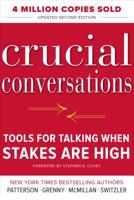Auguste Comte and Positivism: The Essential Writings (History of Ideas Series)
Select Format
Select Condition 
You Might Also Enjoy
Book Overview
Although Auguste Comte is conventionally acknowledged as one of the founders of sociology and as a key representative of positivism, few new editions of his writings have been published in the English language in this century. He has become virtually dissociated from the history of modern positivism and the most recent debates about it. Gertrud Lenzer maintains that the work of Comte is, for better or for worse, essential to an understanding of the modern period of positivism. This collection provides new access to the work of Comte and gives practitioners of various disciplines the possibility of reassessing concepts that were first introduced in Comte's writings.Today much of the ordinary business of academic disciplines is conducted under the assumption that the realm of science is essentially separate from the realms of politics and science. A close reading of Comte will reveal how deeply such current ideas and theories were originally embedded in a particular political context. One of his central methodological principles was that the theory of society had to be removed from the arena of political practice precisely in order to control that practice by means of these same sciences. It is in Comte's work that the reader will be able to observe how the forces of social and political reaction began to be powerfully organized to combat the critical forces in its own and later eras. Auguste Comte and Positivism will be of importance to the work of philosophers, sociologists, political theorists, and historians. This description may be from another edition of this product.
Format:Paperback
Language:English
ISBN:0226472175
ISBN13:9780226472171
Release Date:January 1984
Publisher:University of Chicago Press
Length:505 Pages
Weight:1.20 lbs.
Related Subjects
Almanacs Almanacs & Yearbooks Business Business & Investing Finance Investing Popular EconomicsMore by Auguste Comte
Customer Reviews
5 customer ratings | 5 reviews
There are currently no reviews. Be the first to review this work.



































![The Eight Circulars Of Auguste Comte, Tr. [by S. Lobb And Others, Ed. By R. Congreve]....](https://i.thriftbooks.com/api/imagehandler/s/37930E43B4000B5E8BD032446719E2CBBFAFF4DE.jpeg)

![A General View of Positivism, Tr. [From Discours Sur L'ensemble Du Positivisme] by J.H. Bridges](https://i.thriftbooks.com/api/imagehandler/s/5773E62ABB93894536229FC37D6DFD115E9CA534.jpeg)
















